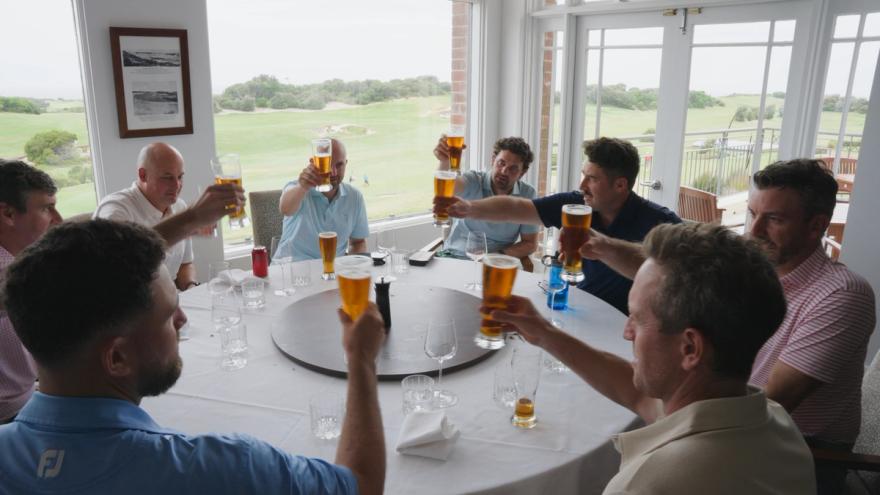Welcome to the sixth installment of GHIN & Tonic. Our hope is that this space serves as a callback to the spirit of the original writing that appeared on No Laying Up dot com: unvarnished, wide-ranging, and somewhat random, but with golf as the loose thread. Some will be more golf-heavy, some golf-light - think TrapDraw Podcast plus some golf sprinkled in. We’ll pass the ball around on these on a weekly basis and all will be personal in nature.
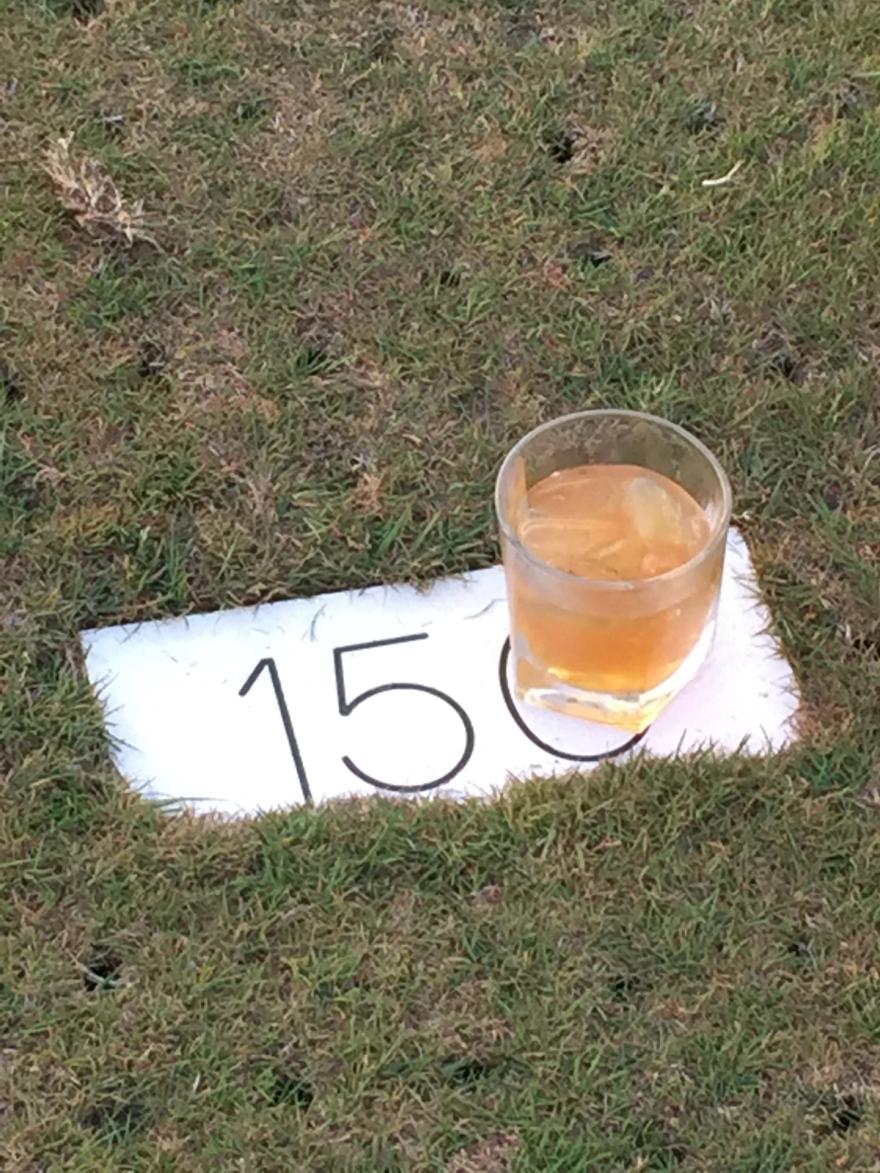
GHIN
FIRST NINE
We’ve been talking a lot for the last two years about how lucrative the rewards of professional golf should be, and whether disruption has been good for the PGA Tour. This week marks one year since the framework agreement between the PGA Tour and the PIF was announced on CNBC, and I’m not sure we’re any closer to an actual deal than we were a year ago.
It’s been an exhausting but necessary debate, even though I doubt too many minds have been changed. We still don’t know how it’s going to play out, two years in, so we’re going to keep talking about it and arguing about it.
I hope we find some time, in the midst of all that, to talk about the loneliness creep that’s happening amongst professional golfers.
Despite all the glamour and the money the game dangles in front of its players, a number of them have been opening up in recent years, describing how isolating the game can be. Scotland’s Robert (Bob) MacIntyre brought it up recently at the PGA Championship, revealing that while moving to Orlando had been necessary professionally, it had not done wonders for his mental health.
“It's just a different environment on the PGA Tour. It's very much business,” MacIntyre said. “There's not as much chatting that goes on. In Europe, we travel the world. You know what I mean, we go to Asia, the Middle East. We go all over the place. When you're in these countries and you don't speak the local language, you kind of have to stick together. There's just a group of guys that I kind of hang about with in Europe that make life on the road a lot easier. Out here, it's me and my girlfriend.”
MacIntyre was so miserable during one stretch earlier this season, he decided to take a break and go back to Oban, his hometown, where he barely touched his clubs for three weeks. It was like recharging his body and his mind. When he returned to the United States, he played his best golf of the year at Valhalla, finishing T-8, his best showing at a major in three years. It made him question whether the excellent practice facilities at Isleworth in Orlando, and the proximity to PGA Tour events, was worth the trade-off.
“Look, when I can be around friends, family, people closest to me, people that actually care about me, they speak to me as Bob the human rather than Bob the golfer,” MacIntyre said. “I think that's when I'm at my happiest, when I'm not talking about golf, golf, golf. Life is actually more important than what I'm doing out here.”
You probably know what happened next. MacIntyre decided he’d try to bring a piece of Oban with him on Tour, if only for a week. So he called up his dad and asked if he’d caddie for him in the Canadian Open. MacIntyre won for the first time on the PGA Tour, and when he and his father cried during their post-round interview with CBS’ Amanda Balionis, it gave us one of the best moments in golf this year.
“If in doubt, phone dad,” MacIntyre said.
MacIntyre’s words echoed something Lexi Thompson said in her retirement speech at the U.S. Women’s Open.
“Being out here can be lonely,” Thompson said, before getting choked up. “I think, especially with what’s happened recently in golf, people don’t realize a lot of what we got through as a professional athlete. We’re not perfect. We’re humans.”
It also reminded me of something Kiradech Aphibarnrat said 18 months ago, when he was trying to get back onto the PGA Tour after losing status. He said he didn’t realize how lonely he would feel playing professional golf in America when he became the first player from Thailand to earn his PGA Tour card in 2018-19.
“I think the tough and difficult thing for me is to be only one single Thai player on the PGA Tour,” Aphibarnrat said. “I don’t have any friends. I mean, Thai friends. So we keep speaking English. Not in my language. To be honest, I feel a little bit lonely and homesick sometimes. My family is not here. … When you’re playing good, you’re not celebrating with anyone. When you’re playing bad, you’re staying with yourself again. You just can’t explain anything to anyone.”
It also made me think about Grayson Murray, and how he understood feeling isolated better than just about anyone. It’s one of the reasons he reached out to other professional golfers if he heard they were struggling with depression, addiction and anxiety. He would send them messages of encouragement, even if he’d never met them, just to share that he knew what it was like to feel alone.
I don’t have any profound wisdom to offer here, or any solutions. I think mental health is essential to talk about, but it’s also complicated. Is homesickness the same as loneliness? How much can depression be attributed to environment and circumstance versus a chemical imbalance in the brain? I’m sure there are some valid opinions in both camps, but in my experience, people who think there are easy solutions to complex problems are usually selling something.
One of the tragedies of Murray’s death is that he did have people who loved him, and he was brave enough to keep asking for help, even when he felt like the PGA Tour was letting him down. There are a lot of valid criticisms of Jay Monahan and the job he’s done as PGA Tour commissioner, but I do think he deserves credit for trying to help Murray. In 2021, Murray wrote a series of tweets expressing his frustrations with the Tour, saying no one had ever responded when he asked for help dealing with addiction and anxiety.
“When Grayson said that, I called him right away,” Monahan said. “Over the last several years, I spent a lot of time with him. I wanted to understand what we could do, in his estimation and his opinion, to help everybody else out here. We’ve made a real point of focus and emphasis. We’re proud of the programs we have in place to support our players. I’m devastated by Grayson’s loss. The conversations I had with him over the last year, I learned an awful lot from him. He was very open and transparent with me. I found inspiration in that.”
This shit is hard, and no two people’s situations are the same. But it’s important to keep talking about all of it, because at least that makes us feel like we’re not alone in our struggles.
SECOND NINE
My colleague Tron Carter wanted me — in this space — to talk about what my five favorite golf courses are in the world.
After thinking about it for a few days, I feel like the kid who goes off to college and is afraid to name his five favorite bands during a late night dorm conversation because he knows everyone else in the room is way cooler than he is. They’ve been passing around sophisticated playlists or attending concerts for years, and I’m just trying to build a record collection. When your friends have played Pine Valley, Royal Melbourne, The Old Course, Augusta National, Cypress Point, Tara Iti, Sand Hills, Royal County Down, Muirfield, Merion, Pebble Beach, LACC, Kingston Heath, Riviera and you’ve played zero of them, you can’t help but feel like a poser trying to put your own list together.
That said, I suspect my experiences are more in line with the majority of our audience. One of the reasons Tourist Sauce is NLU’s most enduring franchise is it gives viewers a window into places they might not have access to, either because of financial limitations or a lack of personal connections.
Favorite, of course, can mean different things. There is something a lot more personal about calling a course a “favorite” as opposed to trying to list the “best” courses you’ve ever played, which is why I think the music analogy still works. “Into The Mystic” by Van Morrison is probably my favorite song ever recorded, but saying it is one of the best songs ever written is a subjective take, one that can’t be proven right or wrong, just shared.
So with that in mind, here are my five “favorite” golf courses in the world, and a brief attempt to explain why they make my (very personal) list.
5. Bandon Trails: Anyone who has ever been to Bandon has annoying Bandon takes they’re happy to share, but when someone says they went to Bandon but didn’t play Trails because it wasn’t on the ocean, I immediately think less of them. It remains my favorite walk in the United States. I don’t love the first hole or the last hole, and I think 14 could still be improved, but the other 15 holes are almost spiritual for me. I would play here every day and never get tired of it. There is so much chaos in modern life, but there is a stillness and a serenity at Trails that I don’t think I’ve seen replicated at another public course. I understand why Pacific Dunes is sexier and why Bandon Dunes feels more joyful. I even get why Sheep Ranch feels like a painting. If given the choice, I’d prefer a stroll through the trees that is Trails.
4. Rum Pointe: My journalism friends and I used to take an annual golf trip to Ocean City, Maryland. I think I have played more competitive rounds here than any golf course. I have made birdies here, I have thrown clubs here, I have made triple bogeys here, I have sipped whiskey here. I have even slept here, thanks to the apartment that you can rent that sits above the clubhouse. If you rent it, the course lets you have the run of the place once they shut down, and so my friends and I played skins as an 8-some with glasses of bourbon and bowls of homemade chili resting on the fairways. Later, a friend and I took glow balls and a flashlight and played the 18th hole in total darkness. It’s the rare Pete Dye design that is not only public, it won’t cost a mortgage payment. Golf in Ocean City can be hit or miss, but Rum Pointe is my Bruce Springsteen — big, brash, thoughtful, fun and challenging. I like other stuff more, but this place is part of my canon.
3. Rocky Point: You might remember this course from the Baltimore season of Strapped, where I entered the NLU Universe. I think every person needs a golf course in their life that’s $40 or less to walk 18 holes, and that has some memorable shots and some cold beers worth revisiting. I had no idea I was going to shoot a career-best 73 when Randy, Neil and D.J. came to Baltimore back in 2019, nor did I think I was ever going to work with them in the future. In the middle of the round, I actually had to do a phone interview with Buffalo Bills legend Steve Tasker (for a story about Patriots special teams legend Mathew Slater) so I wasn’t exactly focused on my score that day, just showing the boys a good time. Even though it wasn’t captured on film, I’ll remember the 3-wood I hit into the 14th hole (to set up an eagle) for the rest of time.

2. Missoula Country Club: I would love to be able to put together this list without naming any private courses, but if I didn’t include the place back home that my parents belong to, the whole list would be a lie. I didn’t play here growing up — my parents didn’t join until I graduated from college and set sail for Baltimore — but I have played here a hundred times since, including on my wedding day in 2021. My mom has won the women’s club championship here multiple times, and the senior club championship even more, so watching my daughter play with her on this course makes me emotional every time we tee it up. (It’s possible golf talent skips a generation when I look at their artful swings compared to mine.)
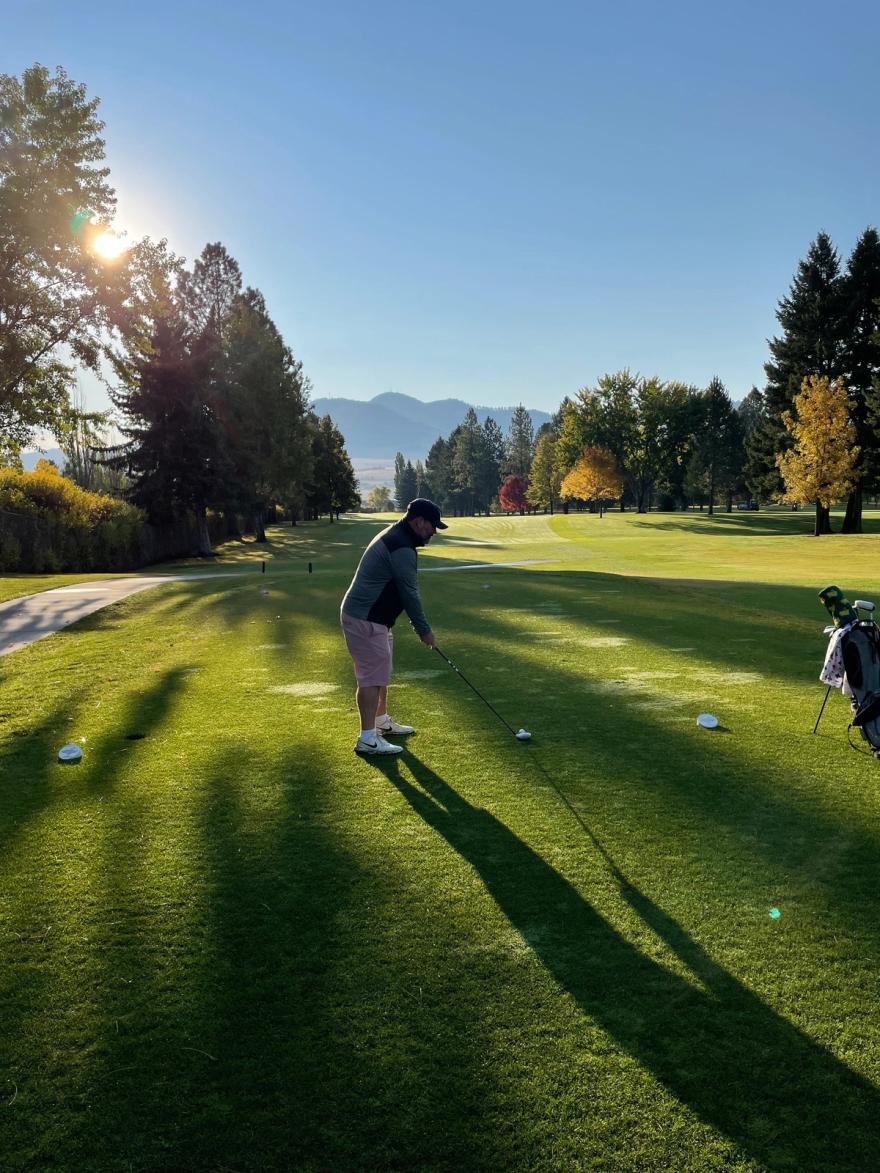
1. Waterton Lakes: I have mentioned this place a few times since joining NLU, and I am planning to write more about it in the future, but this is where I fell in love with golf. My grandfather grew up in Montreal and studied to be a doctor at McGill University, although he was born in New Jersey and served as a physician in the Army during World War II. He loved the country of his birth, but also the country he’d called home as a boy, and so for 65 years, we would trek across the Canadian border into Alberta for a family vacation every summer. I did not know it at the time, but Waterton Lakes Golf Course was one of the last designs that Stanley Thompson (the famous Canadian architect) finished before he died in 1952. I was indifferent toward golf for much of my childhood, never expressing much of an interest in being good. I was content to play a couple times a year, but Waterton Lakes (a course where bears roamed freely on the back nine) was the place where I played. One year, my uncle Tom encouraged me to use his Ping Eye2 green dot irons for a twilight round, and something surreal overtook me. I don’t think I’ve ever hit the ball as flush as I did that day, even in the years since. The way the ball danced across the sky, with the mountains as the backdrop, filled up my heart like nothing before. You can see a video of the course here. This piece, by The Preferred Lie, captures the essence of what makes it special. I haven’t been back for 10 years, but I’m taking my family there this July, and I’m more excited to play it than I am to play The Old Course in August.
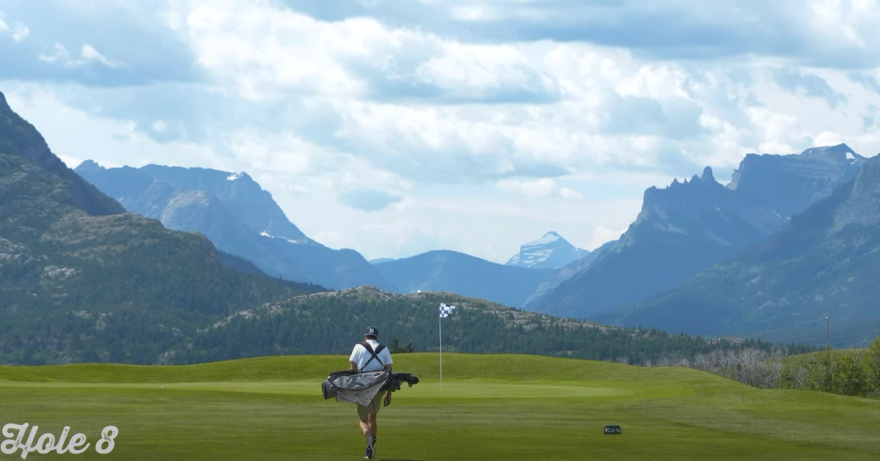
What Are They Serving At The Turn?
Last week in this column, after returning from Erin Hills, I asked readers for some nominations for the best golf course food. Here are some of the submissions sent in:
—Shredded chicken sandwich, bag of chips and draft beer at Sycamore Spring GC. “For $10, you’ll eat like a king and maybe only ask for one more $4 beer. Remember, shredded chicken is an Ohio five-course meal at most weddings.”
— The complimentary chowder served at the turn at Caledonia Golf & Fish Club in Pawley's Island, South Carolina. “I played the course on our yearly trip last year (course itself was a delight) and wasn't even planning on having the chowder as we passed the little hut, but got talked into trying it. By #10 green I wished I'd gotten two cups.”
—Fish tacos at Cabo del Sol near Cabo San Lucas. “The best that I have ever had. I will never forget those fish tacos.”
—At Aiken golf club the owner's (Jim McNair) wife makes homemade treats to be sold at the somewhat 1/2 way house, you pass it after 7 and 14. “Always a must stop if it’s open to see what batch she has put out.”
—The sausage egg and cheese burrito at the food shack next to the Roosevelt Municipal in Los Angeles. “I’m a muni kid AND a sous chef. I’ve also not been back to LA to play — and eat at — Roosevelt since 2012, so it may very well no longer exist. For that I am sorry you missed the breakfast burrito in Griffith Park.”
—Peanut butter sandwich with bacon on wheat bread at Fisher’s Island.
—The Burger Dog at (newly renovated) Golden Gate Park Golf Course.
Subscribe to No Laying Up Emails
If you enjoy NLU content, you'll enjoy NLU emails. We send our newsletter twice a month, and we send a Weekly Digest email. Get monthly deals, exclusive content, and regular updates on all things No Laying Up #GetInvolved
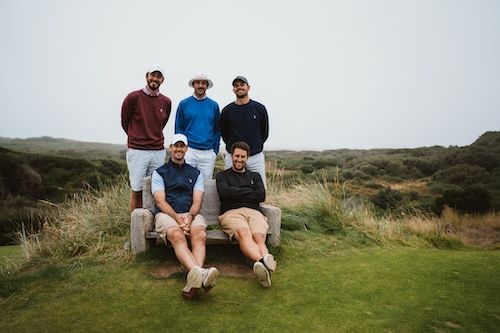
TONIC
One thing I’ve read, watched and listened to lately:
- Read: The sad passing of Bill Walton reminded me of this Sam Anderson profile in the New York Times Magazine, which is one of my favorite profiles published in the last decade. It’s the kind of piece that makes me feel like I barely know how to write at all, which is both inspiring and humbling. There are a dozen passages I love, but this one sticks out:
It’s hard to know with Walton where the persona ends and the person begins. He is self-conscious, and intensely self-conscious about his self-consciousness. The veins of irony and sincerity and pain and joy run very deep, and they cross and tangle. As a player, Walton was famously maniacal in his pursuit of winning. He was also famously miserable when he was hurt. This was a special agony of Walton’s injuries: the pain wasn’t just physical; it was existential. The control that he found in the flow of the game — his perfect fluency in basketball — was hard to replicate elsewhere. Pain was isolating.
“I’ve spent half my adult life in the hospital,” he told me. “I’ve spent half my adult life in hotels. Waiting in line to check in. Waiting in line to rent a car. Waiting in line to go through security. Waiting in line at the terminal for the plane. Waiting for the waitress at the restaurant. I hate waste.”
- Watched: I feel a little sheepish admitting this, but I finally sat down and watched Oppenheimer this week, having been unwilling to commit to its three hour runtime until now. I enjoyed it immensely, and loved the main cast, although a few of the cameos (Rami Malek, Gary Oldman) felt like a minor distraction instead of an additive. (Though I suppose if you want someone to convey Harry Truman’s gravitas, Oldman is a fine choice if you can get him.) Cillian Murphy was everything that was advertised, and I’d encourage anyone just catching up on the movie to go back and listen to the Trap Draw Oscars podcast with Tim Simons because D.J., Randy and Tim’s review of the film is better than anything I could offer now that I’ve finally seen it.
One thing Randy tipped me off to this year is what a perverse joy I get from reading Richard Brody’s film reviews, particularly when it’s a movie I liked and was critically adored like Oppenheimer. Brody, a famous curmudgeon, shit all over Oppenheimer, calling it “a movie-length Wikipedia article” before suggesting that Christopher Nolan portrays the historical stakes that Oppenheimer faces as an “interconnected set of trolley problems.” I genuinely love reading smart writing about something I vehemently disagree with, if only because I think it helps me sharpen what I love about something when I’m forced to defend it.
Got an idea for a future GHIN and Tonic entry?
Email one of us at kvv@nolayingup.com or tron@nolayingup.com.
Join The Nest
Established in 2019, The Nest is NLU's growing community of avid golfers. Membership is only $90 a year and includes 15% off at the Pro Shop, exclusive content like a monthly Nest Member podcast and other behind-the-scenes videos, early access to events, and more newsletter-exclusive written content from the team when you join The Nest.
